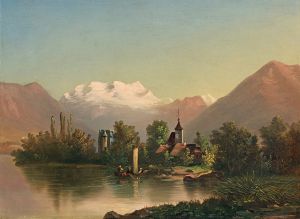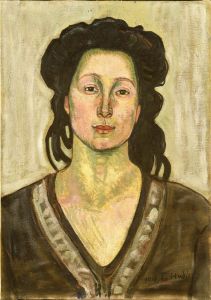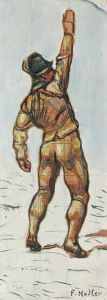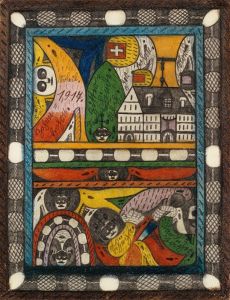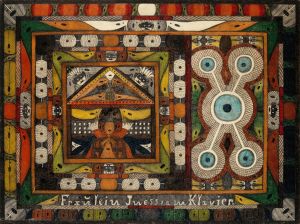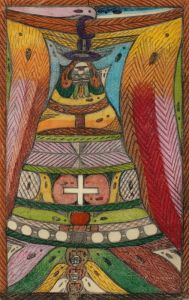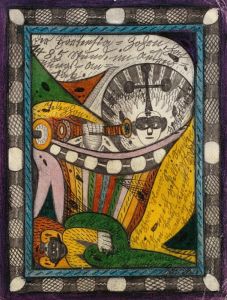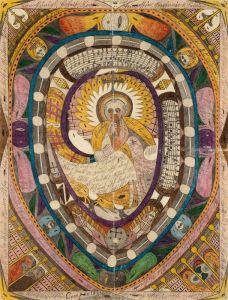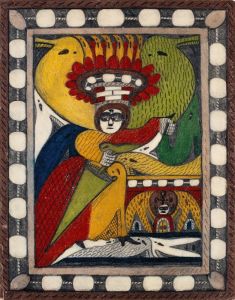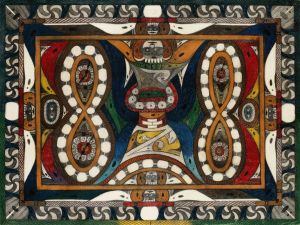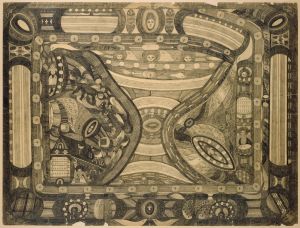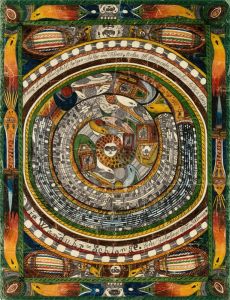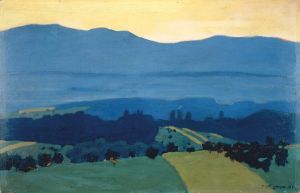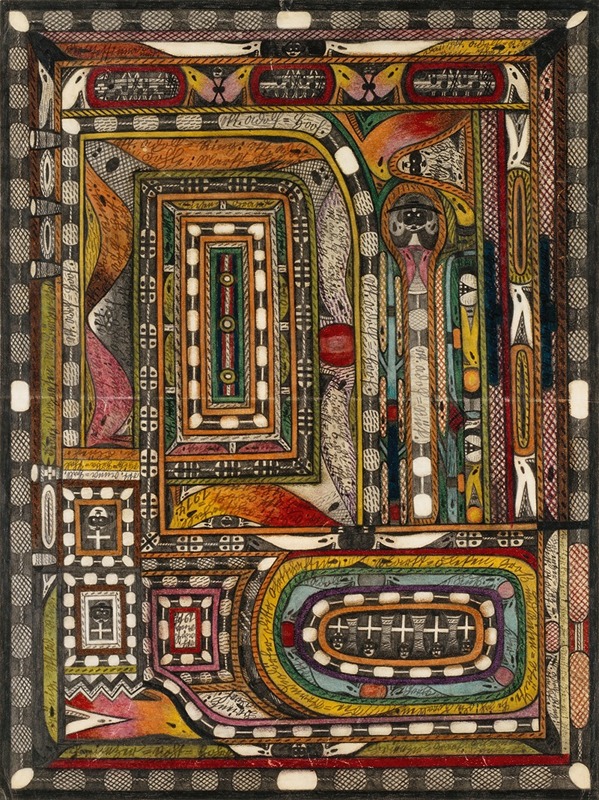
Hasli=Thal, im Berner=Oberland
A hand-painted replica of Adolf Wölfli’s masterpiece Hasli=Thal, im Berner=Oberland, meticulously crafted by professional artists to capture the true essence of the original. Each piece is created with museum-quality canvas and rare mineral pigments, carefully painted by experienced artists with delicate brushstrokes and rich, layered colors to perfectly recreate the texture of the original artwork. Unlike machine-printed reproductions, this hand-painted version brings the painting to life, infused with the artist’s emotions and skill in every stroke. Whether for personal collection or home decoration, it instantly elevates the artistic atmosphere of any space.
Adolf Wölfli was a Swiss artist known for his intricate and detailed works, often created during his time in a psychiatric institution. One of his notable pieces is "Hasli=Thal, im Berner=Oberland," which is part of his larger body of work that combines art with narrative and musical elements. Wölfli's art is characterized by its complex patterns, vivid imagery, and the integration of text and symbols, reflecting his unique vision and personal experiences.
Born in 1864 in Bern, Switzerland, Wölfli had a difficult early life, marked by poverty and the loss of his parents. He spent much of his youth in foster care and working as a farmhand. In 1895, he was institutionalized at the Waldau Clinic in Bern after being diagnosed with schizophrenia. It was during his time at Waldau that Wölfli began to create art, initially as a therapeutic activity encouraged by his doctors.
"Hasli=Thal, im Berner=Oberland" is part of Wölfli's extensive series of works that he collectively referred to as the "St. Adolf-Giant-Creation." This series is a fantastical autobiography in which Wölfli reimagines his life story, transforming his personal history into a grand, mythological narrative. His works often depict imaginary landscapes, cities, and journeys, blending elements of reality with fantasy.
The piece "Hasli=Thal, im Berner=Oberland" specifically references the Haslital, a valley in the Bernese Oberland region of Switzerland. This area is known for its stunning natural beauty, characterized by mountains, rivers, and lush landscapes. Wölfli's depiction of the Haslital is likely infused with his imaginative reinterpretation, incorporating his distinctive style of dense, decorative patterns and symbolic motifs.
Wölfli's art is notable for its meticulous detail and the use of a wide range of media, including colored pencils, crayons, and collage. His works often feature repetitive motifs, musical notations, and invented languages, creating a rich tapestry of visual and textual elements. This complexity reflects Wölfli's inner world and his attempt to construct a sense of order and meaning through his art.
Despite his confinement, Wölfli's work gained recognition during his lifetime, thanks in part to the efforts of Dr. Walter Morgenthaler, a psychiatrist at Waldau who published a monograph on Wölfli in 1921. Morgenthaler's book, "Ein Geisteskranker als Künstler" ("A Psychiatric Patient as Artist"), brought attention to Wölfli's art and highlighted the therapeutic potential of artistic expression for individuals with mental illness.
Today, Adolf Wölfli is regarded as a pioneering figure in the field of outsider art, a term used to describe art created outside the boundaries of official culture, often by self-taught individuals or those with mental health challenges. His work has been exhibited internationally and is held in several major collections, including the Adolf Wölfli Foundation at the Museum of Fine Arts in Bern.
"Hasli=Thal, im Berner=Oberland" exemplifies Wölfli's ability to transform his personal experiences and struggles into a unique artistic vision, offering viewers a glimpse into his complex and imaginative world. His legacy continues to inspire and challenge conventional notions of art and creativity.





